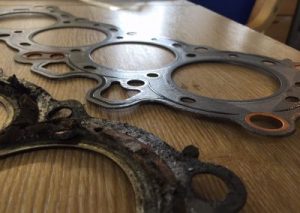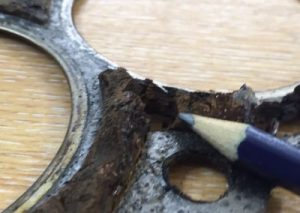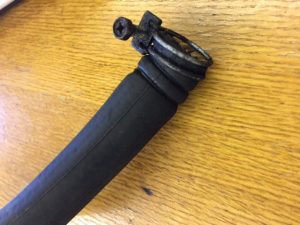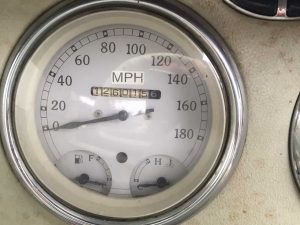Head gaskets are one of the most traumatic things that happen to any Figaro, not to mention the owners of those cars.
We wanted to write this article for a number of reasons: we want to help people identify whats happened to their cars. We also want to point out if there are any areas they can work on to prevent the risks and also to ensure the damage isn’t too bad.
Firstly lets outline some of the main Figaro failings, found during head gasket failure inspections here at The Figaro Shop.
- A hose or other point in the cooling system fails, the system runs dry of coolant and the head starts to warp with the heat.
When this fail occurs the result depends on the engine, how hot it gets and also the condition of the head gasket itself. If the gasket is new or at least in a good state the engine may survive a mild overheating however in many cases it blows.
- The water system gets a blockage or the thermostat fails to open fully.
This is usually a more gradual fail, when your cars needle is slowly getting higher over time and the car just generally seems to run warm its usually a blockage. Most of the cases we have seen are either the thermostat or the radiator. All old radiators have some lack of efficiency but at some stage this actually starts to effect running. Sometimes its just a case of road dust and dirt blocking the cooling fins.
- The gasket fails through age and deterioration.
At times when we have seen this the damage seems to be more spectacular, cars which have little use and spend time with no anti freeze in are most prone to this.
Ways to spot this last fault are by an instant huge loss of compression as well as the car stopping before the water drains out.
- The last of the common failings we have seen here is gradual gasket failure. White smoke as water slowly ingresses into the combustion chambers and out the exhaust. A misfire caused by antifreeze on the spark plugs, especially when cold. Hoses blowing one by one and not that common on Figs but a good sign, lots of water and oil mixed.
Here are some images which may help you point out what’s happened to your car
The first image is a new gasket next to a deteriorated gasket. The brown stain is rust caused by the lack of anti freeze probably over years. This gasket is also most likely 25 years old so the ageing process will also be a contributor.
There isn’t much of a way to view the gasket ‘in situ’ so its hard to see if its going.
Heavy duty pressure testing can in some cases force a weak gasket to blow so at least you can force a failure rather than it happening at an inconvenient time. We have found that using the Co2 testing (head gasket sniffer kit) doesn’t always indicate this is going to happen. If you’re suspicious that your gasket has failed they are worth a try. Were happy to give any advice on the best way to use these, they can be bought all over the web.


The second image is a perished hose, it’s really important to change these. It’s really important to have good hoses. The originals just don’t last 25 years; if you haven’t had your changed you should check them with a view to possibly renewing them. Perished rubber is the Figaro’s biggest enemy. You can see the original style jubilee clips cutting the pipe to pieces.

If your Figaro runs hot, get it checked before it’s too late. Sometimes cars spend many years running above temperature and in some cases it doesn’t affect them but its obviously not ideal. It can also mean time to go around the entire system replacing parts so can get expensive too. Just to complicate things further the gauges are not all exactly the same either but a laser type temperature checker is available for this exact job. Looking at the image below, imagine the temperature dial as clock (bottom right gauge), 9 o’clock being cold and 11 o’clock being the top of the gauge. Most cars run at about 9.30-10 o’clock however others do get higher. Up at the top at 10.45-11.00 (the stopper) is too high, could be a gauge fault but worth looking into.

I hope you find this helpful and do feel free to call or email us if you need any further advice.
